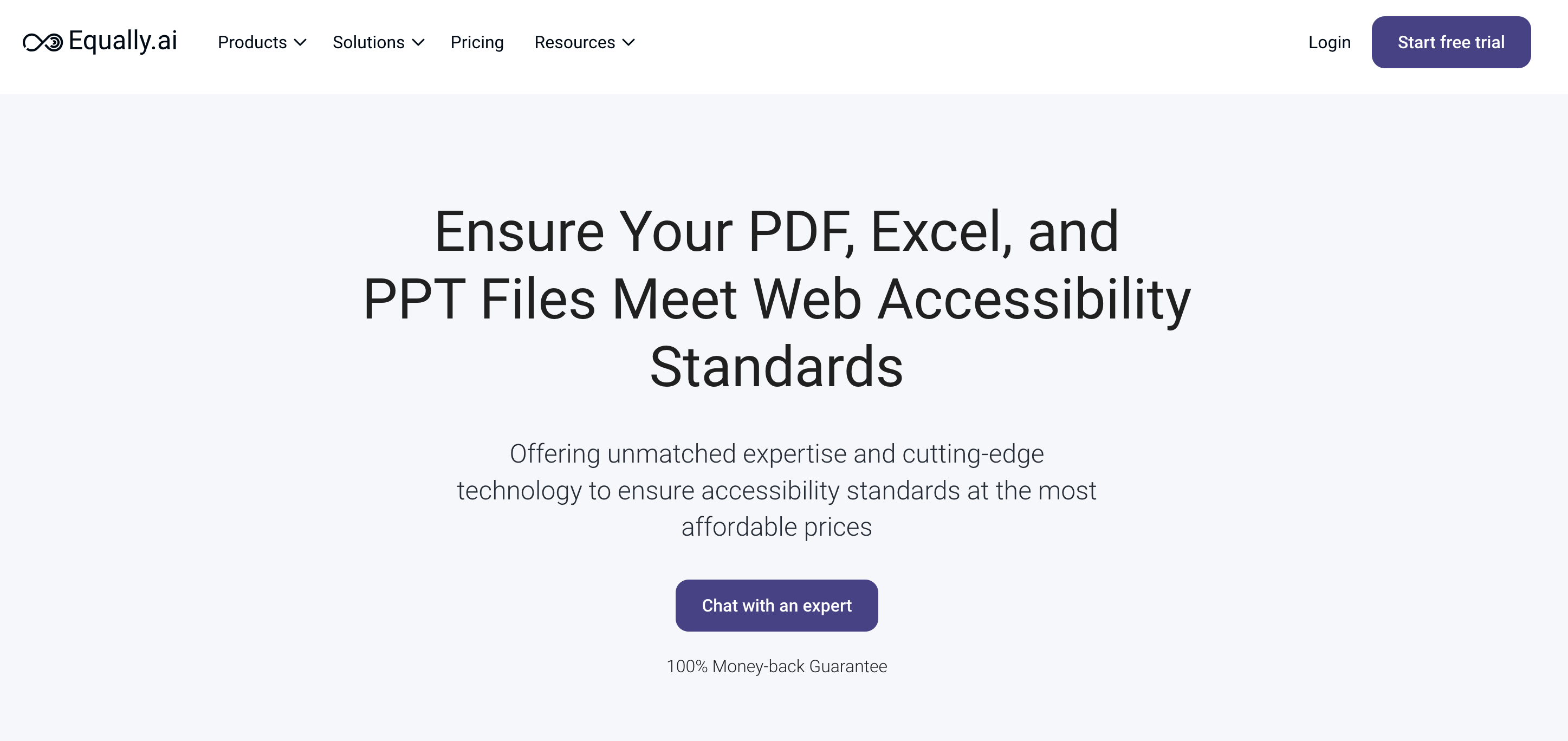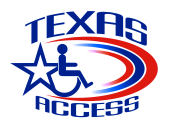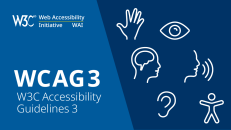In today’s digital age, the importance of accessibility cannot be overstated. Making digital content accessible to everyone, including people with disabilities, is not just a legal requirement, but it is also a moral obligation. One such digital content that requires accessibility is PDFs. PDF accessibility ensures that people with disabilities can access the same information as those without disabilities. In this article, we will discuss the importance of PDF accessibility, how to make PDFs accessible, and high-volume PDF accessibility services.

What is PDF Accessibility?
PDF accessibility refers to the practice of creating PDF documents that can be accessed by everyone, including people with disabilities. PDFs are commonly used for distributing information, including forms, manuals, brochures, and reports. Without accessibility, people with disabilities cannot access the information contained in the PDFs. PDF accessibility involves making changes to the document’s structure, content, and design to make it accessible to everyone.
Why is PDF Accessibility Important?
PDF accessibility is important because it ensures that people with disabilities can access information in PDF documents. Without accessibility, PDFs can present barriers to people with disabilities, making it impossible for them to access essential information. PDF accessibility is also essential because it is a legal requirement in many countries, including the United States and the European Union. Failure to comply with accessibility regulations can lead to legal and financial consequences.
How to Make PDFs Accessible?
Making PDFs accessible involves a few steps. Below is a step-by-step guide on how to make PDFs accessible:
- Use a proper structure: The first step in making PDFs accessible is to use a proper structure. This involves adding headings, lists, tables, and other structural elements to the document.
- Add alternative text to images: Alternative text (alt text) is a brief description of an image. Adding alt text to images makes it possible for people who use screen readers to understand the content of the image.
- Use meaningful links: Links should be descriptive and provide context. For example, instead of using “click here” as a link, use descriptive text such as “download the PDF form.”
- Ensure color contrast: The color contrast should be high enough to make the content legible. Use a color contrast checker to ensure that the color contrast meets accessibility standards.
- Use accessible fonts: Use fonts that are easy to read, such as sans-serif fonts like Arial, Helvetica, or Verdana. Avoid using decorative fonts that are difficult to read.
- Add Alt Text: This is a text description of an image that is read by screen readers.
- Use Descriptions for Tables: Tables should include descriptions of the content and the headers should be identified.
- Create a Logical Structure: This helps readers to understand the flow of the document.
How to test PDF for accessibility? 👉 See tips and examples
High-Volume PDF Accessibility Services: What are they?
High-volume PDF accessibility services are services that help organizations make their PDFs accessible to people with disabilities. These services are designed to handle large volumes of PDFs, which is essential for organizations that have a large number of documents to make accessible. These services use a variety of tools and techniques to make PDFs accessible, including OCR (Optical Character Recognition) software, tagging, and other methods.
Why are High-Volume PDF Accessibility Services Important?
High-volume PDF accessibility services are important for several reasons. First, they ensure that all users, regardless of their abilities, have equal access to information. This is not only an ethical obligation but also a legal requirement under various laws such as the Americans with Disabilities Act (ADA).
Second, high-volume PDF accessibility services help organizations save time and money by automating the process of making PDFs accessible. Instead of manually modifying PDFs one by one, these services can process large volumes of documents quickly and efficiently.
Finally, high-volume PDF accessibility services help organizations such as government agencies and educational institutions stay compliant with accessibility standards.
Companies that Provide High-Volume PDF Accessibility Services

- Equally AI (editor’s choice): Equally AI provides high-volume PDF accessibility services that are designed to help organizations meet their accessibility goals. They offer a range of services, including PDF remediation, document conversion, and more.
- Allyant: Allyant provides high-volume PDF accessibility services that are designed to help organizations meet their accessibility goals. They offer a range of services, including PDF remediation, document conversion, and more.
- Damco Solutions: Damco Solutions offers document accessibility services that cover all types of documents with zero data loss and complete information confidentiality. They provide PDF accessibility services that are designed to help organizations meet their accessibility goals.
- Equidox: Equidox PDF Accessibility Software is a fast and easy PDF remediation tool that ensures your PDF content is ADA, 508, and WCAG compliant. They offer a high-volume solution that remediates large quantities of templated, recurring PDF documents automatically, producing fully accessible PDFs.
- CDP Communications Inc.: CDP Communications provides automated document accessibility remediation solutions. With their advanced technology, they can comprehend and analyze the semantics, structure, and content positioning of digital documents, as well as identify the appropriate font styles, sizes, and imagery needed to ensure accessibility compliance.
- Crawford Technologies: Crawford Technologies developed the AccessibilityNow platform that offers a comprehensive suite of software solutions and customized services to meet the unique accessibility needs of organizations of all sizes, from small businesses to large corporations, as well as governments at all levels. The platform is designed to streamline the creation and management of accessible documents, ensuring compliance with accessibility regulations and standards.
Sign up with Equally AI to test all features ☝️
How to Choose a High-Volume PDF Accessibility Service?

Choosing the right high-volume PDF accessibility service can be a daunting task. Here are some key factors to consider:
- Identify your accessibility requirements: The first step is to determine your specific accessibility needs. Consider the type of PDF documents you have, the volume of PDFs you need to convert, and the level of accessibility required to ensure compliance with accessibility standards such as WCAG 2.1.
- Research available PDF accessibility services: There are several PDF accessibility services available in the market, and it’s important to research and compare their features, pricing, and reputation. Look for providers that have experience with high-volume projects and offer a range of accessibility solutions, including remediation and testing services.
- Check for compliance with accessibility standards: Ensure that the PDF accessibility service provider you choose adheres to accessibility standards such as WCAG 2.1, Section 508, and PDF/UA. Look for service providers who have certifications such as Trusted Tester, or who use software that is certified by the Accessible Electronic Document Community (AEDC).
- Check for Quality Assurance Processes: It is important to verify that the PDF accessibility service provider has a robust quality assurance process in place. Quality assurance ensures that the output meets your accessibility requirements and that any issues are corrected before delivery.
- Request a sample: Before committing to a PDF accessibility service, ask for a sample of their work. This will give you an idea of the quality of their output and their level of expertise.
- Check customer support: The PDF accessibility service provider should have a reliable customer support team that is available to address any questions or concerns that you may have. Look for providers that offer 24/7 customer support and provide detailed documentation on their websites.
- Evaluate pricing: Pricing is a crucial factor when choosing a PDF accessibility service. Look for providers that offer transparent pricing and competitive rates. Be wary of providers that offer low rates but compromise on quality.
By following these steps, you should be able to choose a high-volume PDF accessibility service that meets your specific needs and ensures compliance with accessibility standards.
In conclusion, PDF accessibility is a critical aspect of digital content creation that ensures equal access to information for all, including those with disabilities. Making PDFs accessible involves using a proper structure, adding alternative text to images, using meaningful links, ensuring color contrast, and using accessible fonts.
High-volume PDF accessibility services are essential for organizations that have a large number of PDFs to make accessible. These services can automate the process of making PDFs accessible, save time and money, and help organizations stay compliant with accessibility standards. When choosing a high-volume PDF accessibility service, it’s important to consider your specific accessibility needs, research available services, and ensure compliance with accessibility standards.
By prioritizing accessibility, we can create a more inclusive and equitable digital world for everyone.







